Mark Lane on Escaping the Jonestown Massacre (1978)
The dark side of history: https://thememoryhole.substack.com/
Mark Lane (February 24, 1927 – May 10, 2016) was an American attorney, New York state legislator, civil rights activist, and Vietnam war-crimes investigator. Sometimes referred to as a gadfly, Lane is best known as a leading researcher, author, and conspiracy theorist on the assassination of United States President John F. Kennedy. Lane authored 10 books on the JFK assassination, including Rush to Judgment, the 1966 number-one bestselling critique of the Warren Commission and Last Word: My Indictment of the CIA in the Murder of JFK, published in 2011.
Early career
Mark Lane was born in The Bronx, New York,[7] the son of Harry Arnold and Elizabeth Levin (Levin was changed to Lane in the 1920s), and raised in Brooklyn, New York. From 1945 to 1946, he served in the United States Army after World War II and was stationed in Austria. After attending Long Island University, he received a Bachelor of Laws from Brooklyn Law School in 1951.[8][9][3] As a law student, Lane was the administrative assistant to the National Lawyers Guild and orchestrated a fund-raising event at Town Hall in New York City that featured American folk singer Pete Seeger.
Following his admission to the New York bar in 1951, Lane established a practice with Seymour Ostrow in East Harlem. Although Lane acquired a reputation as "a defender of the poor and oppressed," Ostrow later asserted that Lane was "motivated more by his ambition and quest for publicity than any dedication to a cause or concern for the interest of his clients." Their partnership dissolved in the late 1950s.[10]
In 1959, Lane helped found the Reform Democrat movement within the New York Democratic Party. He was elected with the support of Eleanor Roosevelt and presidential candidate John F. Kennedy[clarification needed] to the New York Legislature in 1960. During his own campaign, he also managed the New York City area's campaign for Kennedy's 1960 presidential bid.[11] He was a member of the New York State Assembly (New York County's 10th District, encompassing East Harlem and Yorkville, where Lane resided) in 1961 and 1962.[12] In the legislature, Lane spent considerable time working to abolish capital punishment. As he promised, Lane served for only one term and then managed the campaign for his replacement.
In June 1961, during the civil rights movement, Lane was the only sitting legislator to be arrested for opposing segregation as a Freedom Rider.[13] In 1962, he ran for Congress in the Democratic primary and lost.[14] In the 1968 presidential election, Lane appeared on the ballot as a third party vice-presidential candidate, running on the Freedom and Peace Party ticket (an offshoot of the Peace and Freedom Party) with Dick Gregory.
President Kennedy assassination
Warren Commission
After the assassination of President John F. Kennedy, Lane wrote a letter to Chief Justice Earl Warren on December 17, 1963, requesting that the Warren Commission give consideration to appointing defense counsel to advocate for Lee Harvey Oswald's rights, and enclosed a 10,000 word "brief" that he had submitted for publication.[15][16] Published less than four weeks after the assassination, Lane's article in the December 19 issue of National Guardian, "Oswald Innocent? A Lawyer’s Brief", attempted to rebut various assertions made by Dallas County District Attorney Henry Wade regarding the assassination and to offer a defense of Oswald.[15][1] Oswald's mother, Marguerite Oswald, reached out to Lane after reading the article.[1]
In December, Lane travelled to Dallas to question Oswald's family, and three days later suggested to Mrs. Oswald that she sue the city of Dallas for the death of her son. Lane said: "It would be an attempt to give Lee Oswald in death what he could not obtain life—a fair trial."[17] Mrs. Oswald announced on January 14 that she had hired Lane to represent her son before the Warren Commission.[18] After Lane notified the commission that he had been retained by Marguerite Oswald to represent her deceased son, the Commission's general counsel J. Lee Rankin replied: "The Commission does not believe that it would be useful or desirable to permit an attorney representing Lee Harvey Oswald to have access to the investigative materials within the possession of the Commission or to participate in any hearings to be conducted by the Commission."[16][19] Although Warren reversed that position with a statement released on February 25 that said Walter E. Craig, president of the American Bar Association, had been appointed by the Commission to represent the interests of Oswald, Lane remarked that he still considered himself to be Oswald's counsel.[19]
Lane testified before the Warren Commission on March 4, 1964 and again on July 2, 1964.[20] In his March 4 testimony,[21] Lane testified that he had contacted witness Helen Markham during the five days preceding his appearance before the Commission and that she had described Tippit's killer to him as "short, a little on the heavy side, and his hair was somewhat bushy".[22] He added, "I think it is fair to state that an accurate description of Oswald would be average height, quite slender with thin and receding hair."[22]
At the beginning of April, Mrs. Oswald asked Lane for a copy of his report, asked him to stop any organized effort on behalf of her son through his Citizens Committee of Inquiry, and terminated his representation.[23]
During the July 2 hearing, exchanges between Lane and Chief Justice Warren were often heated.[20] After Lane reiterated his request to appear before the Commission as Oswald's counsel, Warren reminded him that the Commission had already denied his request to act as counsel, explaining that Marina Oswald was Lee Harvey Oswald's legal representative and that she was already represented by counsel.[24] In addressing the assertion that Markham's description of Tippit's killer was not consistent with the appearance of Oswald, the Warren Commission stated that they had reviewed the telephone transcript in which she was alleged to have made it.[25][26] The Commission wrote: "A review of the complete transcript has satisfied the Commission that Mrs. Markham strongly reaffirmed her positive identification of Oswald and denied having described the killer as short, stocky and having bushy hair."[27] As a result of this, Lane was called to reappear before the Warren Commission in July 1964. Warren told Lane that the commission had "every reason to doubt the truthfulness" of some of his testimony due to the appearance of his misrepresentation of what Markham told him.[28][29]
It was observed that Chief Justice Warren displayed significant contempt for Lane. According to biographer Ed Cray, Warren deemed Lane "a publicity seeker who played fast and loose with the subject." Prior to his death, Warren maintained that the Commission had investigated all leads and left no witness unheard.[30]
Lane's work on the assassination prompted Bertrand Russell to rally support for the formation of a Who Killed Kennedy Committee in Britain.[31]
In 1975, Lane became the director of the Citizens Commission of Inquiry (CCI) – different from the Citizens Commission of Inquiry that disbanded in 1971 – which challenged the veracity of official accounts of the assassination.[32]
Rush to Judgment
Lane's critique of the Warren Commission, Rush to Judgment, was published in 1966. The book became a number one best seller and spent 29 weeks on the New York Times best-seller list.[33] It was adapted into a documentary film in 1967. Rush to Judgment criticizes in detail the work and conclusions of the Warren Commission. Lane questions, among other things, the Warren Commission conclusion that three shots were fired from the Texas School Book Depository and focuses on the witnesses who had recounted seeing or hearing shots coming from the grassy knoll in Dealey Plaza. Lane questions whether Oswald was guilty of the murder of policeman J.D. Tippit shortly after the Kennedy murder. Lane also states that none of the Warren Commission firearm experts were able to duplicate Oswald's shooting feat.[34]
At a news conference a few months after the release of the book, Texas Governor John Connally described Lane as "journalistic scavanger".[35] Lane responded that Connally had showed "an abysmal ignorance to the implications of his own testimony" and was seeking to "bring back the days of McCarthyism.[35]
According to former KGB officer Vasili Mitrokhin in his 1999 book The Sword and the Shield, the KGB helped finance Lane's research on Rush to Judgment without the author's knowledge.[36] The KGB allegedly used journalist Genrikh Borovik as a contact and provided Lane with $2000 for research and travel in 1964.[14][37] Lane called the allegation "an outright lie" and wrote, "Neither the KGB nor any person or organization associated with it ever made any contribution to my work."[38]
Other books by Lane on the topic
Lane later wrote A Citizen's Dissent, documenting his response to the Warren Commission's findings on the Kennedy assassination. He also wrote the first screenplay of the 1973 film Executive Action (starring Burt Lancaster and Robert Ryan), with Donald Freed. Lane's associate, Steve Jaffe, was supervising producer and credited with supplying much of the research material for the film.[39] Lane asserted in his 1991 book Plausible Denial that he only worked on the first draft of the screenplay which was ultimately credited to Dalton Trumbo. He noted that he collaborated with Donald Freed on it and after seeing subsequent drafts, they complained both privately to the producer and publicly at press conferences, pointing out errors in the work.[40]
In 1991, Lane described Plausible Denial as his "last word" on the subject and told Patricia Holt of the San Francisco Chronicle: "I'll never write another sentence about the (JFK) assassination".[41] In November 2011, Lane published a third major book on the JFK assassination titled Last Word: My Indictment of the CIA in the Murder of JFK.[42]
Liberty Lobby appeal trial
The political advocacy group Liberty Lobby published an article in The Spotlight newspaper in 1978 implicating E. Howard Hunt (a convicted Watergate burglar and former CIA agent) in the Kennedy assassination. Hunt sued Liberty Lobby for defamation and was awarded $650,000 in damages. Representing Liberty Lobby on appeal, Lane succeeded in having this judgment reversed, due to an error in the jury instructions.[43] Lane then represented Liberty Lobby at a retrial of the case, winning a verdict rejecting Hunt's libel claim.
This case became the basis for Lane's book Plausible Denial. In the book, Lane claimed that he convinced the jury that Hunt was involved in the JFK assassination, but mainstream news accounts asserted that some jurors decided the case on the issue of whether The Spotlight had acted with "actual malice," as required by the Supreme Court's First Amendment precedents governing libel cases against public figures.[44]
Lane also represented Willis Carto, a founder of Liberty Lobby, after Carto lost control of the Institute for Historical Review in 1993.[45]
Random House suit
In 1995, Lane lost a defamation suit against book publisher Random House, which used the caption "Guilty of Misleading the American Public" under a photo of Lane in an advertisement for Gerald Posner's Case Closed.[5] He sought $10 million in damages for disparagement of his integrity and the unauthorized use of his photograph.[5] Lane was rebuked by Judge Royce C. Lamberth of the United States District Court for the District of Columbia, who said: "A conspiracy theory warrior outfitted with Lane's acerbic tongue and pen should not expect immunity from an occasional, constrained chastisement."[5] [46] A similar suit filed by Robert J. Groden against Random House was dismissed the previous year by a federal judge in New York.[47][48]
Vietnam War crimes investigations
In 1970, Lane involved himself in several war crime inquiries being conducted primarily by antiwar organizations such as the National Committee for a Citizens Commission of Inquiry on U.S. War Crimes in Vietnam (Citizens Commission of Inquiry) and the Vietnam Veterans Against the War. Lane used his contacts and raised funds to support these events, including what would become the National Committee for a Citizens Commission of Inquiry on U.S. War Crimes in Vietnam National Veterans Inquiry and the VVAWs Winter Soldier Investigation. National Committee for a Citizens Commission of Inquiry on U.S. War Crimes in Vietnam and VVAW had originally combined their efforts toward the production of one large war crime investigation, and Lane was initially invited to join the organizing steering committee. Lane suggested the Winter Soldier name, based on Thomas Paine's description of the "summer soldiers" at Valley Forge shrinking from service to their country in a time of crisis. Lane would often travel with fellow activist Jane Fonda to antiwar speaking engagements and fundraising rallies. Lane was also writing a book, Conversations with Americans, a collection of interviews with US servicemen about war crimes in the Vietnam War.
Lane's close association with the National Committee for a Citizens Commission of Inquiry on U.S. War Crimes in Vietnam and VVAW would be short lived. Tod Ensign recalled
It was a mistake to think that celebrities like Jane Fonda and Mark Lane who were used to operating as free agents would submit to the discipline of a steering committee. We should have placed them, instead, on an advisory panel where their visibility and political and money contacts would have been used without having to tangle with them on broader strategic and tactical questions.[49]
National Committee for a Citizens Commission of Inquiry on U.S. War Crimes in Vietnam staffers criticized Lane as being arrogant and sensationalistic, and said the book he was writing had "shoddy reporting in it". National Committee for a Citizens Commission of Inquiry on U.S. War Crimes in Vietnam leaders refused to work with Lane further and gave the VVAW leaders a "Lane or us" ultimatum. VVAW did not wish to lose the monetary support of Lane and Fonda, so the National Committee for a Citizens Commission of Inquiry on U.S. War Crimes in Vietnam split from the project. The following month, after caustic reviews of Lane's book by authors and a Vietnam expert, VVAW also distanced itself from Lane.[50]
James Reston Jr., in the Saturday Review, calls Lane's book disreputable, in that all of the reports contained in it are admittedly unverified, and lean toward the salacious. "Lane makes no pretense of distinguishing between fact and a soldier's talent for embellishment", Reston observed. Commenting on the book's redeeming social value, Reston added that "it would be to show that a pattern of atrocities exists in Vietnam, proving that while My Lai was larger, it was not unique. This needs to be demonstrated, since the Pentagon continues to insist that My Lai was an isolated case. But the effort will have to be left to more responsible parties, like the National Veterans Inquiry."[51] A review of Lane's book by Neil Sheehan in the New York Times Book Review claimed that four of the 32 servicemen interviewed by Lane for the book had misrepresented their military service, according to the Defense Department. Lane responded to Sheehan's inquiries by stating that the Defense Department is the least reliable of all sources for verification of atrocity accounts and that verification of simple facts about the interviewees was "not relevant." Sheehan called Lane's book irresponsible, concluding that, "Some of the horror tales in this book are undoubtedly true", and the "men who now run the military establishment cannot conduct a credible investigation... But until the country does summon up the courage to convene a responsible inquiry, we probably deserve the Mark Lanes."[52] Because of Sheehan's review, Simon and Schuster reneged on the contract for the book. When Lane disproved Sheehan's charges, they were forced to settle with him.[53]
The controversial book reviews caused concern in the VVAW leadership, as Andrew E. Hunt notes,
Sheehan's exposé had placed VVAW leaders in a difficult position. Lane's involvement with the planning of the Winter Soldier Investigation had been extensive. His legal and financial assistance had proven invaluable. Few VVAWers doubted his sincerity or devotion to the effort. Yet they feared associating with Lane could tarnish months of difficult work. "Then the question became, 'How do we protect our integrity?'" recalled Joe Urgo, "'How do we separate ourselves from this guy?'" Organizers hoped Lane would maintain a low profile. Their wishes were fulfilled.[54]
VVAW veterans involved with the WSI event then realized they needed to take control, and insisted that there be no more interference from the likes of Lane. A new, all-veteran steering committee was formed without Lane. Ultimately, the WSI was an event produced by veterans only, without the need of civilians such as Lane and Fonda.[55]
Assassination of Martin Luther King Jr.
Lane wrote Murder In Memphis with Dick Gregory (previously titled Code Name Zorro, after the CIA's code name for King) about the assassination of Martin Luther King Jr., in which he alleged a conspiracy and government coverup.[56] Lane represented James Earl Ray, King's alleged assassin, before the House Select Committee on Assassinations (HSCA) inquiry in 1978. The HSCA said of Lane in its report, "Many of the allegations of conspiracy that the committee investigated were first raised by Mark Lane". He wrote an audio docudrama, Trial of James Earl Ray, that was broadcast on KPFK on April 3, 1978, casting doubt on Ray's guilt [57] Lane was Ray's lawyer for a time. He alleged that Ray was an innocent pawn in a government plot.[3]
Peoples Temple
Engagement and work for the Peoples Temple
In 1978, Lane began to represent the Peoples Temple. Temple leader Jim Jones hired Lane and Donald Freed to help make the case of what it alleged to be a "grand conspiracy" by intelligence agencies against the Peoples Temple. Jones told Lane he wanted to "pull an Eldridge Cleaver", referring to the fugitive Black Panther who was able to return to the United States after repairing his reputation.[58]: 440
In September 1978, Lane visited Jonestown, spoke to Jonestown residents, provided support for the theory that intelligence agencies conspired against Jonestown and drew parallels between Martin Luther King Jr. and Jim Jones. Lane then held press conferences stating that "none of the charges" against the Temple "are accurate or true" and that there was a "massive conspiracy" against the Temple by "intelligence organizations," naming the CIA, FBI, FCC and the U.S. Post Office. Though Lane represented himself as disinterested, the Temple paid Lane $6,000 per month to help generate such theories.[58]: 440–441 Regarding the effect of the work of Lane and Freed upon Temple members, Temple member Annie Moore wrote that "Mom and Dad have probably shown you the latest about the conspiracy information that Mark Lane, the famous attorney in the ML King case and Don Freed the other famous author in the Kennedy case have come up with regarding activities planned against us—Peoples Temple."[59]: 282 Another Temple member, Carolyn Layton, wrote that Don Freed told them that "anything this drug out could be nothing less than conspiracy".[59]: 272
Jonestown tragedy
Lane was present in Jonestown during the evening of November 18, 1978, and witnessed or heard part of the events claiming at least 408 lives (out of a total recount of 915 carried out five days later); these events involved a collective suicide and murder by cyanide poisoning and were compounded by the murder of Congressman Leo Ryan and four others at a nearby airstrip.[60] For months before that tragedy, Jones frequently created fear among members by stating that the CIA and other intelligence agencies were conspiring with "capitalist pigs" to destroy Jonestown and harm its members.[61] This included mentions of CIA involvement in the address Jones gave the day before the arrival of Congressman Ryan.[62]
During the visit of Congressman Ryan, Lane helped represent the Temple along with its other attorney, Charles R. Garry, who was furious with Lane for holding numerous press conferences and alleging the existence of conspiracies against the Peoples Temple.[63] Garry was also displeased with Lane for making a veiled threat that the Temple might move to the Soviet Union in a letter to Congressman Ryan.[64]
Late in the afternoon of November 18, two men wielding rifles approached Lane and Garry, who had earlier been sent to a small wooden house by Jones.[65] It is not clear whether the gunmen were sent to kill Lane and Garry, but one of the gunmen recognized Garry as an attorney in a trial that the gunman had attended.[65] After a relatively friendly exchange, the men informed Garry and Lane that they were going to "commit revolutionary suicide" to "expose this racist and fascist society".[65] The gunmen then gave Garry and Lane directions to exit Jonestown.[65] Garry and Lane then sneaked into the jungle, where they hid and called a temporary truce while the tragedy unfolded.[66]
On a tape made while members committed suicide by ingesting cyanide-poisoned punch, the reason given by Jones to commit suicide was consistent with Jones's previously stated conspiracy theories of intelligence organizations allegedly conspiring against the Temple, that men would "parachute in here on us", "shoot some of our innocent babies" and "they'll torture our children, they'll torture some of our people here, they'll torture our seniors".[67] Parroting Jones's prior statements that hostile forces would convert captured children to fascism, one temple member states, "[T]he ones that they take captured, they're gonna just let them grow up and be dummies".[67]
After the tragedy
Lane later wrote a book about the tragedy, The Strongest Poison.[68] Lane reported hearing automatic weapon fire and presumes that U.S. forces killed Jonestown survivors.[69] While Lane blames Jones and Peoples Temple leadership for the deaths at Jonestown, he also claims that U.S. officials exacerbated the possibility of violence by employing agents provocateurs.[69] For example, Lane claimed that Temple attorney (and later defector) Timothy Stoen, who, Lane alleged, had repeatedly prompted the Temple to take radical action before defecting, "had evidently led three lives", one of those being a government informant or agent.[70]
Later career and death
Lane is the author of the 1970 book Arcadia in which he details the effort to prove that James Joseph Richardson, a black migrant worker in Florida, had been falsely accused of killing his seven children. He was convicted of the murders through corrupt means used by the authorities involved. Richardson had been on death row for almost five years for the crimes, escaping execution by virtue of the Furman v. Georgia Supreme Court decision. Nineteen years after the book was published he received a hearing in which the charges were dropped thanks to the interventions of Lane and Miami's then- prosecutor, Janet Reno.[71] Richardson was released from prison after 21 years, and Richardson's babysitter, though suffering from dementia, later confessed to the murders.[72][71]
Lane resided in Charlottesville, Virginia.[73] He continued to practice law and lectured on many subjects, especially the importance of the United States Constitution (mainly the Bill Of Rights and the First Amendment) and civil rights.
At the annual Law Library of Congress and American Bar Association Law Day symposium 2001, on the question, "Who are the paradigms for the lawyer as reformer in American culture?", Mark Lane was one of the twelve legal figures featured by panel moderator, Bernard Hibbitts, professor at the University of Pittsburgh School of Law.[74]
On May 10, 2016, Lane died of a heart attack at his home in Charlottesville at the age of 89.[75]
Works
Arcadia. Holt, Rinehart and Winston, 1970, ISBN 978-0030818547.
Chicago Eyewitness. Astor-Honor, 1968.
Citizen Lane: Defending our Rights in the Courts, the Capitol, and the Streets, Laurence Hill Books, 2012, ISBN 978-1613740019.
A Citizen's Dissent: Mark Lane Replies to the Defenders of the Warren Report. Holt, Rinehart and Winston, 1968.
Code Name Zorro. Pocket, 1978, ISBN 978-0671811679 (with Dick Gregory), Reissued as: Murder in Memphis: The FBI and the Assassination of Martin Luther King. Thunder's Mouth Press, 1993, ISBN 978-1560250562.
Conversations with Americans: Testimony from 32 Vietnam Veterans. Simon & Schuster, 1970, ISBN 978-0671207687.
Last Word: My Indictment of the CIA in the Murder of JFK. Skyhorse Publishing, 2011, ISBN 978-1616084288.
Plausible Denial: Was the CIA Involved in the Assassination of JFK? Thunder's Mouth Press, 1991, ISBN 978-1560250005.
Rush to Judgment. Holt, Rinehart and Winston, 1966; 2nd edition issued Thunder's Mouth Press, 1992, ISBN 978-1560250432.
Norden, Eric; Worthy, William; March, Andrew; Lane, Mark (1966). The Silent Slaughter: the role of the United States in the Indonesian massacre. New York: Marzani & Munsell for Youth Against War and Fascism. OCLC 1075621167.
The Strongest Poison, Hawthorne Books, 1980, ISBN 080153206X.
Sources
Bugliosi, Vincent. Reclaiming History: The Assassination of President John F. Kennedy. 2007, Norton, ISBN 978-0393045253.
Documentary
Citizen Lane. US, 2013 (102 min) – directed by Pauley Perrette[76]
References
Kidder, Tracy (March 1979). "Washington: The Assassination Tangle". The Atlantic. No. March 1979. Retrieved October 9, 2022.
Reiterman, Tim; John Jacobs (1982). Raven: The Untold Story of Reverend Jim Jones and His People. Dutton. p. 434. ISBN 0525241361.
Schudel, Matt (May 14, 2016). "Mark Lane, gadfly lawyer, author who promoted JFK conspiracy theory, dies at 89". National. The Washington Post. Retrieved October 23, 2022.
"Mark Lane, conspiracy theorist – obituary". The Telegraph. May 18, 2016. Retrieved October 23, 2022.
Rosenthal, Harry F. (January 26, 1995). "Judge Rebukes Conspiracy Theorist Mark Lane". Associated Press. AP. Retrieved February 28, 2013.
name=Hawes Publications | url=http://www.hawes.com/1966/1966-12-25.pdf, page 2
"Citizen Lane", Chapter 1, Page 1
"Columbia Spectator 5 March 1962 — Columbia Spectator".
"Mark Lane". Retrieved May 13, 2016.
"Ocala Star-Banner". Retrieved May 13, 2016 – via Google News Archive Search.
Citizen Lane: Defending Our Rights in the Courts, the Capitol, and the Streets; Mark Lane; Chicago Review Press; 2011. pages 113–115
Mark Lane. "Citizen Lane". Kirkus Reviews. Retrieved May 13, 2016.
Bugliosi, page 1011
Bugliosi, page 1001
"Lawyer Urges Defense for Oswald at Inquiry". New York Times. December 19, 1963. p. 24. Retrieved October 9, 2022.
"Exhibits 1976 to 2189". Hearings Before the President's Commission on the Assassination of President John F. Kennedy. Vol. XXIV. Washington, D.C.: United States Government Printing Office. 1964. pp. 444–445.
"Lane Suggests Suit By Oswald's Mother". New York Times. January 3, 1964. p. 20. Retrieved October 5, 2022.
"Mrs. Oswald Picks New York Lawyer To Defend Her Son". New York Times. January 15, 1964. p. 14. Retrieved October 5, 2022.
"Bar Head Will Represent Oswald in Warren Inquiry". New York Times. February 26, 1964. p. 1. Retrieved October 6, 2022.
"Mark Lane Silent at Warren Inquiry". New York Times. July 3, 1964. p. 7. Retrieved October 6, 2022.
"Testimony of Mark Lane". Hearings Before the President's Commission on the Assassination of President John F. Kennedy, Volume II. Washington, D.C.: United States Government Printing Office. 1964. pp. 32–60.
Hearings Before the President's Commission on the Assassination of President John F. Kennedy, Volume II 1964, p. 51.
"Mother of Oswald Ends Tie With Lane". New York Times. April 2, 1964. p. 37. Retrieved October 5, 2022.
"Testimony of Mark Lane Resumed". Hearings Before the President's Commission on the Assassination of President John F. Kennedy. Vol. V. Washington, D.C.: United States Government Printing Office. 1964. pp. 444–445.
"Chapter 4: The Assassin". Report of the President's Commission on the Assassination of President John F. Kennedy. Washington, D.C.: United States Government Printing Office. 1964. p. 167.
"Appendix 12: Speculations and Rumors". Report of the President's Commission on the Assassination of President John F. Kennedy. Washington, D.C.: United States Government Printing Office. 1964. p. 652.
Report of the President's Commission on the Assassination of President John F. Kennedy, Chapter 4 1964, p. 167.
"Warren Doubtful Of Lane Testimony On Assassination". New York Times. July 4, 1964. p. 5. Retrieved October 6, 2022.
'Warren Committee Challenged by Lane', New York Times, July 8, 1964
Cray, Ed (1997). "Facts So Simple". Chief Justice: A Biography of Earl Warren. New York: Simon & Schuster. pp. 430–431. ISBN 0684808528. Retrieved June 19, 2017.
Peter Knight, The Kennedy Assassination, Edinburgh University Press Ltd., 2007, page 77.
Citizens Commission of Inquiry, newsletter, Harold Weisberg Archive, Hood College. http://jfk.hood.edu/Collection/Weisberg%20Subject%20Index%20Files/L%20Disk/Lane%20Mark/Lane%20Mark%201975/Item%2009.pdf
name=Hawes Publications | url=http://www.hawes.com/1966/1966-09-11.pdf, p.2 | url=http://www.hawes.com/1967/1967-03-26.pdf
Bugliosi, page 1005
"Connally blasts Warren Report critics: 'journalistic scavangers'". Sherbrooke Daily Record. Sherbrooke,Quebec: Sherbrooke Daily Record Company Ltd. AP. November 24, 1966. p. 1. Retrieved October 23, 2022.
Persico, Joseph E. (October 31, 1999). "Secrets From the Lubyanka: A historian examines an archive of Soviet files smuggled to the West by a former K.G.B. agent". The New York Times. New York. Retrieved March 31, 2013.
Christopher Andrew and Vasili Mitrokhin, The Sword and the Shield: The Mitrokhin Archive and the Secret History of the KGB, Basic Books, 1999. Excerpted here. According to the book, Soviet journalists, including KGB agent Genrikh Borovik, met with Lane to encourage him in his research.
"Letter to The Nation from Lane".
Farber, Stephen (June 13, 1979). "Kennedy assassination subject of film". The Miami News. Miami. p. 4B. Retrieved May 26, 2013.
Plausible Denial, Thunder's Mouth Press copyright 1991 page 326
Holt, Patricia (December 31, 1991). "Mark Lane's Hunt For JFK Assassins" (PDF). San Francisco Chronicle. San Francisco. Retrieved May 4, 2015.
"Last Word, My Indictment of the CIA in the Murder of JFK". Archived from the original on December 8, 2015. Retrieved 2015-12-03.
E. Howard Hunt, Jr., Plaintiff-appellant, v. Victor L. Marchetti, Defendant, Liberty Lobby, a D.C. Corp., Defendant-appellee, 824 F.2d 916 (11th Cir. 1987) [1]
"Plausible Denial, Mark Lane, E. Howard Hunt, and the Liberty Lobby Trial". Retrieved May 13, 2016.
Berlet, Chip; Lyons, Matthew M. (2000). "9 The Pillars of U.S. Populist Conspiracism; The John Birch Society and the Liberty Lobby". Right-wing Populism in America: Too Close for Comfort. New York: Guilford Press. p. 191. ISBN 978-1572305625. Retrieved September 10, 2014.
Lane v. Random House, Inc., 985 F. Supp. 141, 149 (D.D.C. 1995).
"Random prevails in suit over 'Case Closed' ad". Publishers Weekly. 241 (38): 9. September 19, 1994.
Groden v. Random House, Inc., 61 F.3d 1045 (2d Cir. 1995).
Tod Ensign; Viet Nam Generation: A Journal of Recent History and Contemporary Issues, March 1994
Hunt, Andrew E. (1999). The Turning: A History of Vietnam Veterans Against the War. New York University Press. pp. 63, 67. ISBN 978-0814736357. Retrieved June 29, 2011.
James Reston Jr., Saturday Review, January 9, 1971, p. 26
New York Times Book Review, December 27, 1970 by Neil Sheehan
Mark Lane; Citizen Lane, Chicago Review Press, 2012, pages 218–220.
Andrew E. Hunt; The Turning: A History of Vietnam Veterans Against the War; New York University Press, 1999; page 67
Gerald Nicosia; Home to War: A History of the Vietnam Veterans' Movement, 2001, page 84
Bugliosi, p. 1002
The Trial of James Earl Ray : a docu-drama / written by Mark Lane ; directed by Donald Dreed; produced by Mike Hodel and Lucia Chappelle.
Reiterman, Tim (1982). Raven: The Untold Story of The Rev. Jim Jones and His People. Dutton. ISBN 0525241361.
Moore, Rebecca. A Sympathetic History of Jonestown. Lewiston: E. Mellen Press. ISBN 0889468605
Reiterman 1982, p. 484.
See, e.g., Jim Jones, Transcript of Recovered FBI tape Q 234, Q 322, Q 051
Jim Jones, Transcript of Recovered FBI tape Q 050
Reiterman 1982, p. 460.
Reiterman 1982, p. 461.
Reiterman 1982, p. 541.
Tim Reiterman (1982) Raven: The Untold Story of The Rev. Jim Jones and His People ISBN 0525241361, p. 563
"Jonestown Audiotape Primary Project" Alternative Considerations of Jonestown and Peoples Temple. San Diego State University.
Lane, Mark, The Strongest Poison, Hawthorne Books, 1980, ISBN 080153206X
Moore, Rebecca, "Reconstructing Reality: Conspiracy Theories About Jonestown", Journal of Popular Culture 36, number 2 (Fall 2002): pages 200–20
Lane, Mark, The Strongest Poison, Hawthorne Books, 1980, ISBN 080153206X, p. 290
Frail and aged, man returns to Arcadia and a hurtful past, Sarasota Herald Tribune, Ian Cummings, October 27, 2013. Retrieved June 1, 2019.
"A Man Who Loves Challenges". Archived from the original on December 3, 2013. Retrieved November 30, 2013.
"Rushing to judgment-- and everywhere". The Hook. November 23, 2006. Archived from the original on September 30, 2007. Retrieved December 9, 2006.
"Law Day 2001 (June 2001) – Library of Congress Information Bulletin". Library of Congress. Retrieved May 13, 2016.
Schneider, Keith (May 13, 2016). "Mark Lane, Early Kennedy Assassination Conspiracy Theorist, Dies at 89". The New York Times. p. B14. Retrieved May 22, 2016.
"Citizen Lane" – via IMDb.
External links
The Lane Law Firm
Appearances on C-SPAN
New York State Assembly
Preceded by
Martin J. Kelly, Jr.
New York State Assembly
New York County, 10th District
1961–1962 Succeeded by
Carlos M. Rios
vte
Assassination of John F. Kennedy
John F. Kennedy Lee Harvey Oswald
Assassination
Assassination rifle Timeline J. D. Tippit John Connally Nellie Connally Jacqueline Kennedy
Pink Chanel suit James Tague William Greer Roy Kellerman Clint Hill Zapruder film
Abraham Zapruder Dealey Plaza Texas School Book Depository
Sixth Floor Museum Presidential limousine Parkland Hospital Witnesses Ike Altgens Marie Muchmore Orville Nix Three tramps Spanish Lady Mary Moorman Badge Man Umbrella man
Aftermath
Media coverage Autopsy Reactions Johnson inauguration Jack Ruby Ruby v. Texas Dictabelt recording Conspiracy theories
CIA Single-bullet theory 1992 Assassination Records Act In popular culture Robert N. McClelland (surgeon) Charles Baxter (physician) Malcolm Perry (physician) Earl Rose (coroner) Dallas memorial
State funeral
Foreign dignitaries Burial site and Eternal Flame Black Jack (horse)
Investigations
Warren Commission Jim Garrison investigation House Select Committee on Assassinations Researchers
Category
vte
Jim Jones and the Peoples Temple
Timeline
Early life of Jim Jones I-Hotel Peoples Temple in San Francisco Jonestown Jonestown conspiracy theories
People
Members
Timothy Stoen Larry Layton Deborah Layton Jeannie Mills Tyrone Mitchell Archie Ijames
Congressional entourage
Leo Ryan Jackie Speier Tim Reiterman Don Harris
Other
Father Divine William Branham Mahatma Gandhi Gautama Buddha Vladimir Lenin Jesus Christ Charles Garry Marshall Kilduff Mark Lane George Moscone Willie Brown Harvey Milk Angela Davis Huey P. Newton John R. Burke Mervyn Dymally
Books
Journey to Nowhere: A New World Tragedy (1980) Raven (1982) Seductive Poison (1999) A Thousand Lives (2011)
Films and television
Documentaries
Jonestown: The Life and Death of Peoples Temple (2006) Jonestown: Paradise Lost (2007)
Dramatizations
Guyana: Crime of the Century (1979) Guyana Tragedy: The Story of Jim Jones (1980) The Sacrament (2013)
Related articles
Cult Awareness Network "Drinking the Kool-Aid" Mary Pearl Willis Foundation Evergreen Cemetery Jim Jones in popular culture
vte
Conspiracy theories
List of conspiracy theories
Overview
Core topics
Antiscience Cabals
Deep state Éminence grise Power behind the throne Civil / Criminal / Political conspiracies Crisis actors Deception Dystopia Espionage Global catastrophe scenarios Pseudohistory Pseudoscience Secrecy Secret societies Urban legends and myths
Psychology
Apophenia Attitude polarization Cognitive dissonance Communal reinforcement Confirmation bias Denialism Locus of control Machiavellianism Mass psychogenic illness
Moral panics Paranoia Psychological projection
Astronomy and outer space
2012 phenomenon
Nibiru cataclysm Ancient astronauts Apollo Moon landings Flat Earth Hollow Moon Reptilians
UFOs
Alien abduction Area 51 Black Knight satellite Cryptoterrestrial / Extraterrestrial / Interdimensional hypothesis Dulce Base Estimate of the Situation (1948) Lake Michigan Triangle MJ-12 Men in black Nazi UFOs
Die Glocke Project Serpo
Hoaxes
Dundy County (1884) Maury Island (1947) Roswell (1947) Twin Falls (1947) Aztec, New Mexico (1949) Southern England (1967) Ilkley Moor (1987) Gulf Breeze (1987–88) Alien autopsy (1995) Morristown (2009)
Deaths and disappearances
Assassination /
suicide theories
Zachary Taylor (1850) Louis Le Prince (1890) Lord Kitchener (1916) Tom Thomson (1917) Władysław Sikorski (1943) Benito Mussolini (1945) Adolf Hitler (1945) Subhas Chandra Bose (1945) Johnny Stompanato (1958) Marilyn Monroe (1962) John F. Kennedy (1963) Lee Harvey Oswald (1963) Lal Bahadur Shastri (1966) Harold Holt (1967) Martin Luther King Jr. (1968) Robert F. Kennedy (1968) Salvador Allende (1973) Aldo Moro (1978) Renny Ottolina (1978) Pope John Paul I (1978) Airey Neave (1979) Olof Palme (1986) Zia-ul-Haq (1988) GEC-Marconi scientists (1980s–90s) Turgut Özal (1993) Vince Foster (1993) Kurt Cobain (1994) Yitzhak Rabin (1995) Diana, Princess of Wales (1997) Alois Estermann (1998) Nepalese royal family (2001) Yasser Arafat (2004) Benazir Bhutto (2007) Osama bin Laden (2011) Hugo Chávez (2013) Seth Rich (2016) Alejandro Castro (2018) Jeffrey Epstein (2019) Sushant Singh Rajput (2020) John McAfee (2021)
Accidents / disasters
Mary Celeste (1872) RMS Titanic (1912) Great Kantō earthquake (1923) Lynmouth Flood (1952) Dyatlov Pass (1959) Lost Cosmonauts (1950s–60s) JAT Flight 367 (1972) United Air Lines Flight 553 (1972) South African Airways Flight 295 (1987) MS Estonia (1994) TWA Flight 800 (1996) EgyptAir Flight 990 (1999) Malaysia Airlines Flight 370 (2014)
Other cases
Joan of Arc (1431) Yemenite children (1948–54) Elvis Presley (1977) Jonestown (1978)
Body double hoax
Paul McCartney (1966) Avril Lavigne (2003) Melania Trump (2017)
Energy, environment
Agenda 21 California drought manipulation Climate change denial
False theories Free energy suppression HAARP Red mercury
False flag allegations
USS Maine (1898) RMS Lusitania (1915) Reichstag fire (1933) Pearl Harbor (1941) USS Liberty (1967) Lufthansa Flight 615 (1972) Widerøe Flight 933 (1982) KAL Flight 007 (1983) Mozambican presidential jet (1986) Pan Am Flight 103 (1988) Oklahoma City bombing (1995) 9/11 attacks (2001)
Advance knowledge WTC collapse Madrid train bombing (2004) London bombings (2005) Smolensk air disaster (2010) Malaysia Airlines Flight 17 (2014)
Gender and sexuality
Alpha / beta males Anti-LGBT
Anti-gender movement Chemicals Drag panic Gay agenda Gay Nazis myth HIV/AIDS stigma
United States Homintern
Lavender scare Recruitment Grooming Litter box hoax GamerGate Ideology in incel communities Larries / Gaylors Satanic panic Soy and masculinity
Health
5G misinformation Anti-vaccination
Autism
MMR Thiomersal in chiropractic Misinformation Aspartame Big Pharma Chemtrails COVID-19
Ivermectin Lab leak Vaccines In Canada / Philippines / United States Ebola Electronic harassment Germ theory denialism GMOs HIV/AIDS denialism
origins theories oral polio AIDS hypothesis Lepers' plot Medbeds SARS (2003) Water fluoridation Pont-Saint-Esprit mass poisoning
Race, religion and/or ethnicity
Bhagwa Love Trap CERN ritual hoax COVID-19 and xenophobia Freemasons
French Revolution [fr] Gas chambers for Poles in Warsaw (1940s) German POWs post-WWII Priory of Sion Product labeling
Halal Kosher Tartarian Empire War against Islam White genocide
Antisemitic
Andinia Plan Blood libel Cohen Plan Doctors' plot during the Black Death Epsilon Team George Soros Holocaust denial
Trivialization International Jewish conspiracy
Committee of 300 Cultural Bolshevism / Jewish Bolshevism
Żydokomuna Judeo-Masonic plot The Protocols of the Elders of Zion World War II Z.O.G. Judeopolonia Killing of Jesus Kalergi Plan New World Order Rothschilds Stab-in-the-back myth
Christian / Anti-Christian
Anti-Catholic
Jesuits Popish Plot Vatican Bible Giuseppe Siri
Islamophobic
Counter-jihad Bihar human sacrifice Eurabia Great Replacement Love jihad Proposed "Islamo-leftism" inquiry Trojan Horse scandal
Genocide denial /
Denial of mass killings
Armenian Bangladesh Bosnian Cambodian The Holocaust Holodomor Nanjing Rwandan Sayfo Serbs during WWII Uyghur
Regional
Americas
(outside the United States)
Argentina
Andinia Plan Canada
Avro Arrow cancellation Leuchter report Peru
Casa Matusita Venezuela
Daktari Ranch affair Golpe Azul
Middle East / North Africa
In the Arab world
10 agorot Cairo fire Israel-related animal theories Iran
Western-backed Iranian Revolution Israel
Pallywood
Russia
Alaska payment Dulles' Plan Golden billion Petrograd Military Organization Rasputin Ukraine bioweapons
South Asia /
Southeast Asia
India
Cow vigilante violence Greater Bangladesh Pakistan
Jinnahpur Philippines
Tallano gold Thailand
Finland Plot
Turkey
2016 coup attempt
Ergenekon Operation Sledgehammer Gezi Park protests Sèvres Syndrome Üst akıl
Other European
Euromyth Ireland
German Plot Roman Republic
First Catilinarian conspiracy Spain
Mano Negra affair Sweden
Lilla Saltsjöbadsavtalet UK
Clockwork Orange plot Elm Guest House Harold Wilson Voting pencil
United States
Barack Obama
citizenship religion parentage "Obamagate" / Spygate Biden–Ukraine Black helicopters CIA and JFK CIA assistance to bin Laden Clinton body count Cultural Marxism FBI secret society FEMA camps Georgia Guidestones Jade Helm 15 Montauk Project Philadelphia Experiment Pizzagate The Plan (Washington, D.C.) Project Azorian QAnon
Pastel incidents Saddam–al-Qaeda Sandy Hook (2012) Trump–Ukraine "Vast right-wing conspiracy" Vietnam War
POW/MIA issue / Stab-in-the-back myth
2020 election
Italygate "Pence Card" Maricopa County ballot audit Stop the Steal
Other
Dead Internet theory NESARA/GESARA New Coke Phantom time / New chronology Shadow government claims
Bilderberg Illuminati Synarchism Shakespearean authorship
Pseudolaw
Admiralty law Freeman on the land movement Redemption movement Sovereign citizens Strawman theory Tax protesters
Satirical
Acre Bielefeld Birds Aren't Real Li's field Ted Cruz–Zodiac Killer meme
See also
Argument from ignorance Conspiracy Encyclopedia Conspiracy fiction Conspirituality Dogma
Pseudoskepticism Falsifiability Fringe science Historical negationism Paranormal Prejudice
Hate speech Superstition
-
 59:00
59:00
The Memory Hole
1 day agoFormer Attorney General on U.S. War Crimes
565 -
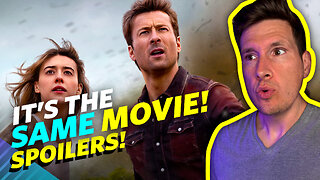 14:21
14:21
Adam Does Movies
19 hours agoTwisters Is The SAME Movie As Twister! - Spoilers!
1.99K2 -
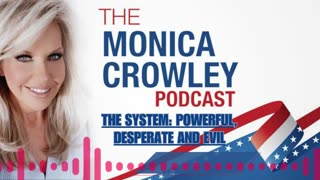 31:43
31:43
TheMonicaCrowleyPodcast
17 hours agoThe Monica Crowley Podcast: The System: Powerful, Desperate and Evil
4.77K7 -
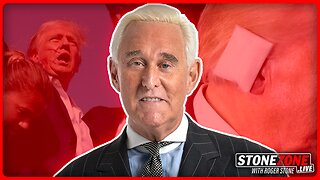 1:00:12
1:00:12
The StoneZONE with Roger Stone
11 hours agoDeep State Fails To Kill Trump: Naval Intel Officers Reveal Who Pulled The Strings | The StoneZONE
18.7K46 -
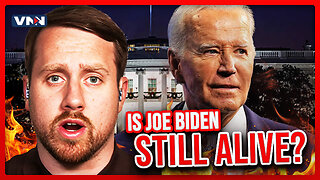 8:25
8:25
Vigilant News Network
14 hours agoMissing Joe Biden Sparks Coup Speculation | Beyond the Headlines
46.4K116 -
 14:42
14:42
Chrissy Clark
12 hours agoDisney Drops Triggering Teddy Bear & Hunter Biden Drops Lawsuit I Underreported Stories
12K15 -
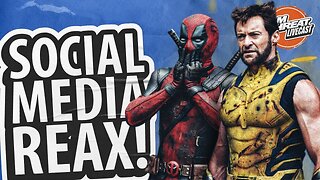 52:53
52:53
Film Threat
13 hours agoDEADPOOL & WOLVERINE SOCIAL MEDIA REACTIONS | Film Threat Livecast
25.2K8 -
 4:25:06
4:25:06
Fresh and Fit
14 hours agoMatthew Cox On Becoming FBI's Most Wanted Con Man, $55 Million In Fraud, Prison & MORE
125K58 -
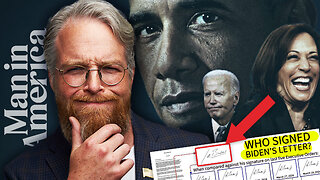 1:03:39
1:03:39
Man in America
20 hours ago🔴 LIVE: DNC COUP? Who Signed Biden’s Letter? WHERE IS JOE???
105K146 -
 2:05:27
2:05:27
Kim Iversen
14 hours agoUNREAL: Polls Claim Tight Race Between Harris And Trump | RESIGN! Secret Service Chief Stonewalls Congress
127K313